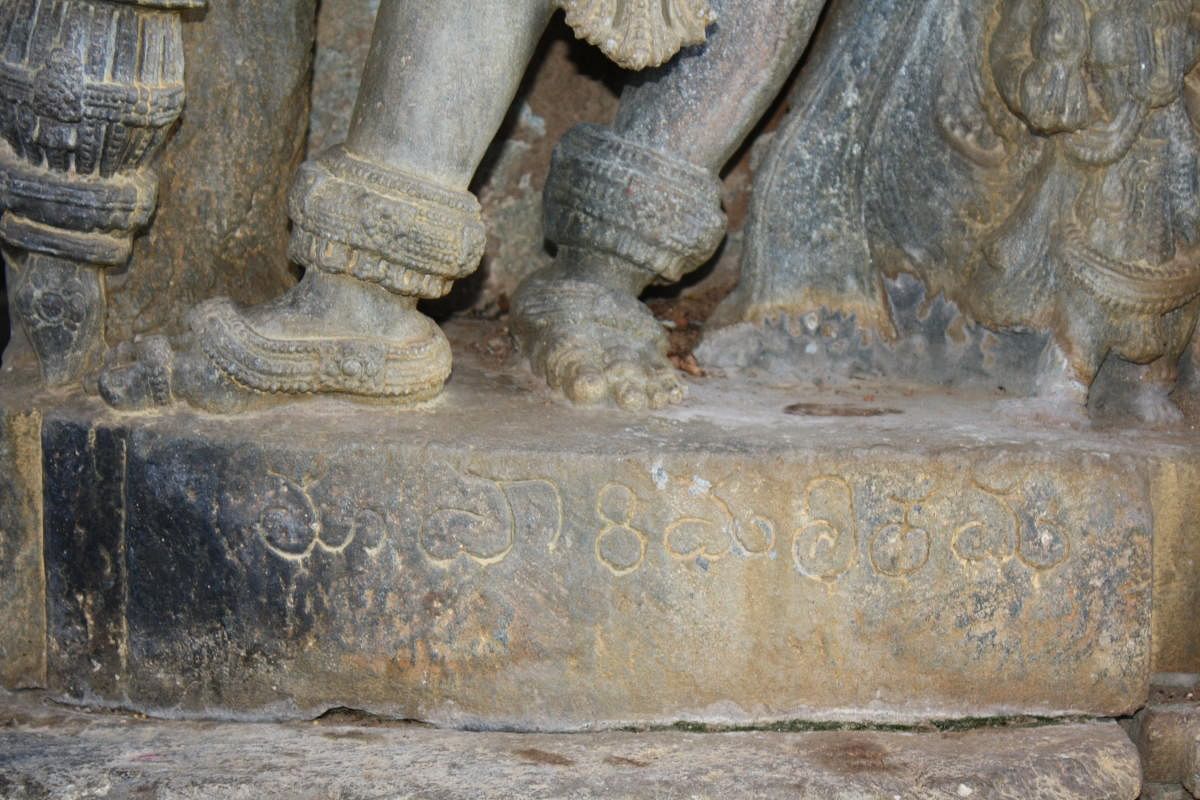A temple that brings together Lord Shiva's five aspects







The Panchalingeshwara Temple in Govindanahalli village is a curious example of Hoysala architecture. Located in Mandya’s Krishnarajapet taluk, the temple has five separate sanctum sanctorums dedicated to the five aspects of Shiva.
We usually come across temples where the five faces (Panchamukha) are executed on one linga itself, or where temples are built separately for each aspect — will power, knowledge, rejuvenation, the soul and universal consciousness.
Talakadu, the famous town of sand dunes in Mysuru, has five temples built separately at different places. While Vaidyanatheshwara, Pathaleshwara, and Maraleshwara temples are located at Talakadu, the other two temples — Arkanatheshwara and Mallikarjuneshwara — are located about 5 km off from the town.
Similarly, a Panchalingeshwara Temple at Somanathapura — now dilapidated — has five towers in a row.
However, the temple at Govindanahalli has five separate garbhagrihas built parallel to each other, along a north-south orientation. Each of them has a closed sukhanasi (entrance) with navarangas (hall) connected by an antharala (a small chamber connecting the hall and the sanctorum).
The outcome of this is a pillared hall that runs for about 120 feet and is 20 feet wide. The hall is supported by three rows of 17 pillars.
The surface of the fifth garbhagriha has no carving and the formation of the pillars of the fifth garbhagriha is different from the others.
On either side of each sanctum sanctorum are niches with images. There are 17 miniature shrines in all, 13 in the navaranga, and four on the walls outside. Some of them have beautiful sculptures which include Ganesha, Mahishasura Mardhini, Bhairava, Saraswathi, Subrahmanya, Veeerabhadra, Umamaheswara, and Sapthamatrika.
The sanctorums have deep ceilings with lotus buds, which is repeated in the navaranga as well. The well-executed sukhanasi doorways are flanked by perforated screens and have a figure of Umamaheswara on the lintel.
Each of the sanctum sanctorum also has a Linga dedicated to an aspect of Shiva — Sadyojatheshwara, Vamadeshwara, Aghoreshwara, Thatpurusheshwara, and Ishaneshwara.
Vishnu sculptures
Though an Ishwara temple, a large number of the figures and sculptures on the walls are of Vishnu in his various forms, including his 10 avatars.
The names of Vishnu have also been carved on the sculptures, making it easy to identify them. His vehicle Garuda is also seen standing with folded hands between the figures of Vishnu. In between these sculptures, there are other images like a lady talking to a parrot, holding a mirror, drummer, plucking flowers, and the like.
The navaranga of the temple also carries an inscription of May 6, 1236, which refers to a grant given during the time of the Hoysala King Someswara. The inscription, however, does not mention the date of the temple’s construction.
Someswara ruled from 1235 to 1254, a period that saw construction of over a dozen temples, including the Panchalingeshwara.
The temple also carries an inscription of ‘Ruvari Mallithama’, a well-known master sculptor of the time. The inscription indicates that the Panchalingeshwara temple was probably built during the middle of the 13th century, the same period when the Narasimha Temple at Nuggihalli in Hassan and Keshava Temple at Somanathapura in Mysuru were constructed.
It also seems like the Panchalingeshwara Temple was initially a ‘Chatushkoota’ temple, with only four sanctum sanctorums, with the fifth one being added later, making it a ‘Panchakuta’ temple.
All these features make the Panchalingeswara temple well worth a visit.